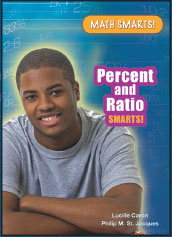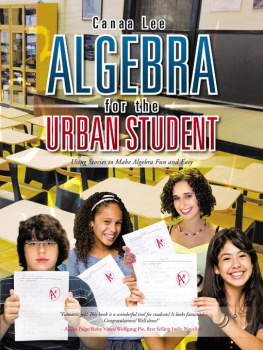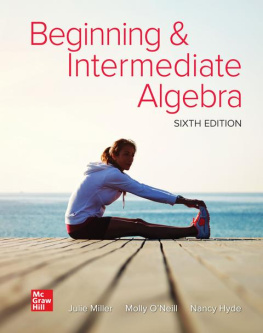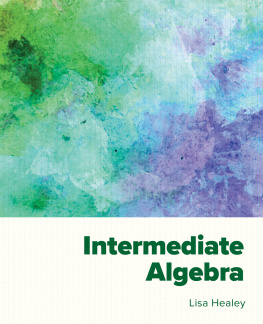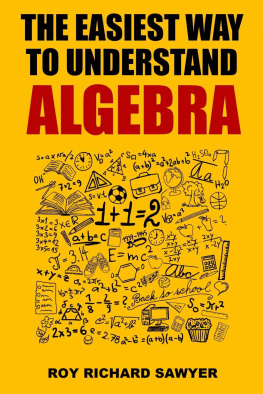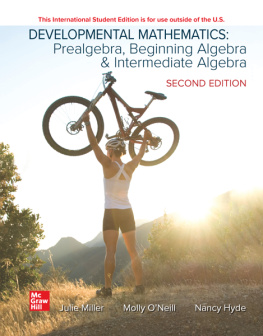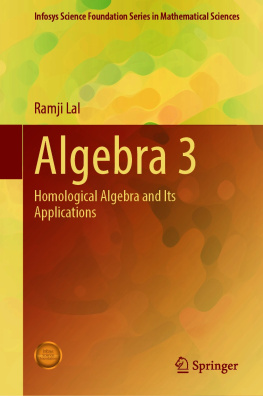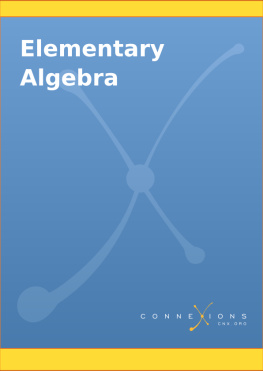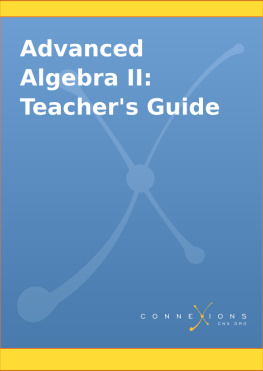Copyright 2010,Some Rights Reserved CC-BY.
Beginning and Intermediate Algebra by Tyler Wallace is licensed under a Creative CommonsAttribution 3.0 Unported License. (http://creativecommons.org/licenses/by/3.0/)
Based on a work at http://wallace.ccfaculty.org/book/book.html.
You are free:
to Share: to copy, distribute and transmit the work
to Remix: to adapt the work
Under the following conditions:
Attribution: You must attribute the work in the manner specified by the author orlicensor (but not in any way that suggests that they endorse you or your use of thework).
With the understanding that:
Waiver: Any of the above conditions can be waived if you get permission from the copyright holder.
Public Domain: Where the work or any of its elements is in the public domain underapplicable law, that status is in no way affected by the license.
Other Rights: In no way are any of the following rights affected by the license:
Your fair dealing or fair use rights, or other applicable copyright exceptions andlimitations;
The authors moral rights;
Rights other persons may have either in the work itself or in how the work is usedsuch as publicity or privacy rights
Notice: For any reuse or distribution, you must make clear to others the license term ofthis work. The best way to do this is with a link to the following web page:
http://creativecommons.org/licenses/by/3.0/ This is a human readable summary of the full legal code which can be read at the followingURL: http://creativecommons.org/licenses/by/3.0/legalcode
Special thanks to: My beautiful wife, Nicole Wallace
who spent countless hours typing problems and
my two wonderful kids for their patience and
support during this project
Another thanks goes to the faculty reviewers who reviewed this text: Donna Brown, MichelleSherwood, Ron Wallace, and Barbara Whitney
One last thanks to the student reviewers of the text: Eloisa Butler, Norma Cabanas, IreneChavez, Anna Dahlke, Kelly Diguilio, Camden Eckhart, Brad Evers, Lisa Garza, Nickie Hampshire, Melissa Hanson, Adriana Hernandez, Tiffany Isaacson, Maria Martinez, Brandon Platt,Tim Ries, Lorissa Smith, Nadine Svopa, Cayleen Trautman, and Erin White
Table of Contents
Chapter 0: Pre-AlgebraChapter 3: Inequalities0.1 Integers.........................................70.2 Fractions.....................................123.2 Compound Inequalitites............1240.3 Order of Operations....................180.4 Properties of Algebra..................22
Chapter 4: Systems of Equations
Chapter 1: Solving Linear Equations1.1 One-Step Equations....................281.2 Two-Step Equations....................331.3 General Linear Equations...........371.4 Solving with Fractions................431.5 Formulas.....................................471.6 Absolute Value Equations...........52
Chapter 5: Polynomials1.7 Variation.....................................571.8 Application: Number/Geometry.641.9 Application: Age.........................721.10 Application: Distance................79
Chapter 2: Graphing2.1 Points and Lines.........................892.2 Slope...........................................952.3 Slope-Intercept Form................1022.4 Point-Slope Form......................1072.5 Parallel & Perpendicular Lines.112
Chapter 6: FactoringChapter 9: Quadratics
Chapter 7: Rational Expressions
7.1 Reduce Rational Expressions....243
Chapter 8: Radicals
8.1 Square Roots.............................288
Chapter 10: Functions
10.1 Function Notation...................386
Chapter 0 : Pre-Algebra
0.1 Integers ............................................................................................................70.2 Fractions ........................................................................................................120.3 Order of Operations .......................................................................................180.4 Properties of Algebra .....................................................................................220.1
Pre-Algebra - Integers
Objective: Add, Subtract, Multiply and Divide Positive and NegativeNumbers.The ability to work comfortably with negative numbers is essential to success inalgebra. For this reason we will do a quick review of adding, subtracting, multiplying and dividing of integers. Integers are all the positive whole numbers, zero,and their opposites (negatives). As this is intended to be a review of integers, thedescriptions and examples will not be as detailed as a normal lesson.
World View Note: The first set of rules for working with negative numbers waswritten out by the Indian mathematician Brahmagupa.
When adding integers we have two cases to consider. The first is if the signsmatch, both positive or both negative. If the signs match we will add the numbers together and keep the sign. This is illustrated in the following examples
Example 1.5 + (3)
8Same sign,add 5 + 3,keep the negativeOur Solution
Example 2.7 + (5)
12
Same sign,add 7 + 5,keep the negativeOur Solution
If the signs dont match, one positive and one negative number, we will subtractthe numbers (as if they were all positive) and then use the sign from the largernumber. This means if the larger number is positive, the answer is positive. If thelarger number is negative, the answer is negative. This is shown in the followingexamples.
Example 3.7 + 2
5
Different signs,subtract 72,use sign from bigger number,negativeOur Solution
Example 4.
4 + 6
2
Different signs,subtract 64,use sign from bigger number,positiveOur Solution
Example 5.4 + (3)1Different signs,subtract 43,use sign from bigger number,positiveOur Solution
Example 6.7 + (10)3Different signs,subtract 107,use sign from bigger number,negativeOur Solution
For subtraction of negatives we will change the problem to an addition problemwhich we can then solve using the above methods. The way we change a subtraction to an addition is to add the opposite of the number after the subtractionsign. Often this method is refered to as add the opposite. This is illustrated inthe following examples.
Example 7.83
8 + (3)5
Add the opposite of 3
Different signs,subtract 83,use sign from bigger number,positiveOur Solution
Example 8.46
4 + (6)10
Add the opposite of 6
Same sign,add 4 + 6,keep the negativeOur Solution
Example 9.9(4)9 + 4
13
Add the opposite of4
Same sign,add 9 + 4,keep the positiveOur Solution
Example 10.6(2)
6 + 24Add the opposite of2
Different sign,subtract 62,use sign from bigger number,negativeOur Solution
Multiplication and division of integers both work in a very similar pattern. Theshort description of the process is we multiply and divide like normal, if the signsmatch (both positive or both negative) the answer is positive. If the signs dontmatch (one positive and one negative) then the answer is negative. This is shownin the following examples
Example 11.(4)(6)Signs do not match,answer is negative24Our Solution
Example 12.36Signs match,answer is positive94Our Solution
Example 13.2(6)Signs match,answer is positive12Our Solution
Example 14.15Signs do not match,answer is negative35Our Solution



